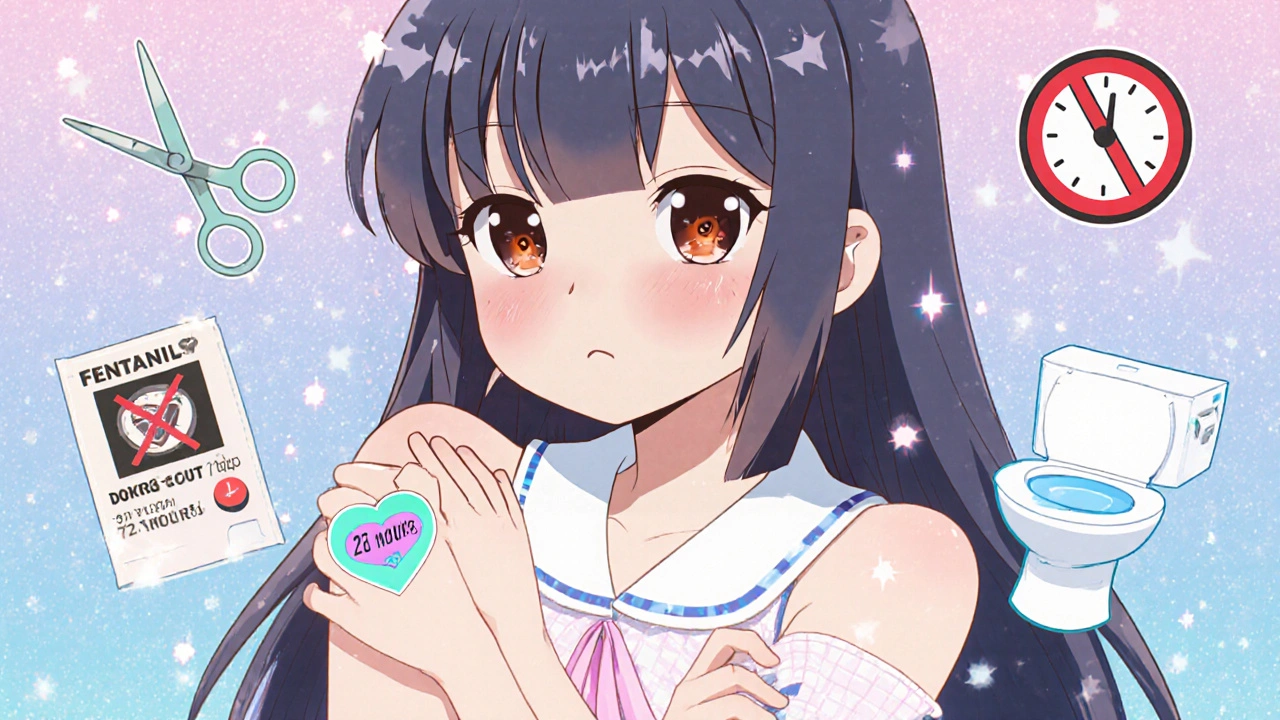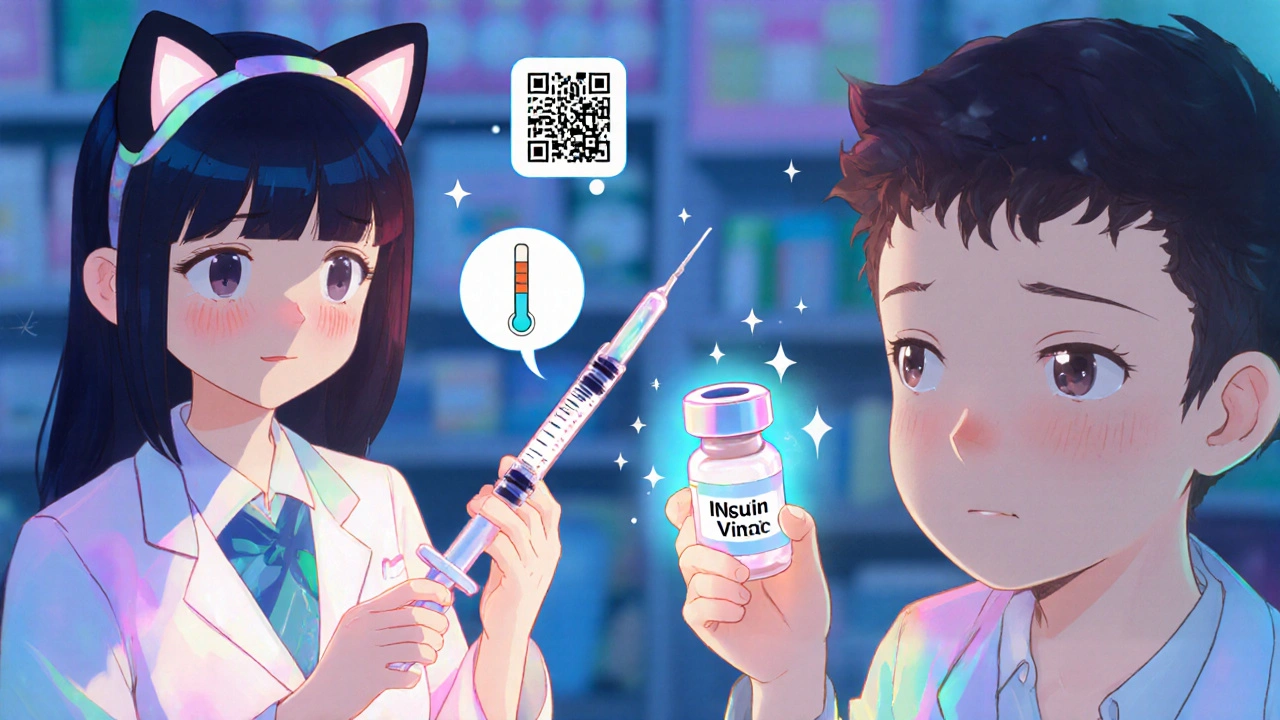Getting a prescription for an inhaler, patch, or injectable isn’t like picking up a bottle of pills. These medications don’t just go in your mouth and swallow. They’re designed to work in very specific ways-and if you misread the label, it can be dangerous. A 2022 study found that nearly 4 out of 10 medication errors with these delivery systems happened because someone misunderstood the label. That’s not just a mistake. It’s a risk to your health.
Why Inhaler Labels Are Different
Inhalers look simple. A metal canister, a mouthpiece, maybe a plastic cover. But the label holds critical details you can’t afford to miss. First, look for the dosage per puff: albuterol sulfate 90 mcg per actuation. That means each time you press down, you get 90 micrograms. If you think it’s 90 total for the whole inhaler, you could be underdosing-or overdosing if you use it too often.Another key detail: the total number of puffs left. Many inhalers now have built-in dose counters. If yours doesn’t, the label should say how many doses are in the canister-like "200 actuations." But here’s the trap: just because the canister feels full doesn’t mean it still has medicine. The propellant runs out before the drug does. That’s why the American Lung Association says 62% of people using metered-dose inhalers don’t realize their inhaler is empty until they’re in trouble.
Look for "prime before first use" instructions. Most new inhalers need 4 test sprays into the air before you use them for the first time. Skip this, and your first dose might be useless. Also check if it says "shake well." That only applies to suspension inhalers, not solution ones. Mixing them up means you won’t get the right dose.
Understanding Transdermal Patch Labels
Patches stick to your skin and release medicine slowly. But they’re not one-size-fits-all. The label will tell you the delivery rate: fentanyl 25 mcg/hour. That’s how much medicine your body gets every hour. If you think it’s 25 total for the whole patch, you’re way off. A 72-hour patch at 25 mcg/hour delivers 5,400 mcg total. That’s a lot.Pay attention to where you apply it. Some patches say "apply to clean, dry skin on the upper arm or chest." Others warn against putting them on areas with cuts, burns, or rashes. Never cut a patch. Fentanyl patches, in particular, can release too much medicine if cut open-up to 4.7 times more, according to the FDA. That’s a life-threatening overdose risk.
Wear time matters. "Change every 72 hours" means exactly 72 hours-not "about three days." If you leave it on longer, you get too much medicine. Remove it carefully. Don’t fold it in half or stick it to the trash. The FDA issued a safety alert in 2022 after 147 cases of accidental exposure from improperly thrown-away patches. Kids and pets have been poisoned by picking up discarded patches. Always fold it in half with the sticky sides together and flush it down the toilet, or return it to your pharmacy.
Reading Injectable Labels Like a Pro
Injectables are the most high-risk. A tiny mistake in reading the concentration can lead to a deadly overdose. Look for units per milliliter. Insulin is labeled as U-100-that means 100 units per mL. But some insulin is U-500, which is five times stronger. If you use a U-100 syringe on a U-500 vial, you could inject five times the dose you meant to.Other injectables like octreotide come in 200 mcg/mL or 1,000 mcg/mL. That’s a five-fold difference. If you don’t check the concentration, you could give yourself the wrong amount. Always double-check the vial label against your prescription. Don’t assume because it looks like the last one you used, it’s the same.
Some injectables need mixing before use. The label will say "reconstitute with 1 mL sterile water." If you skip this step, you’re injecting the wrong thing. Others are ready to use. If you’re unsure, ask your pharmacist. Don’t guess.
Storage is another big one. Insulin in use can stay at room temperature for 28 days. But unopened vials need refrigeration. Heat can break down the medicine. Keep injectables away from sunlight, car dashboards, or hot bathrooms.

Auxiliary Labels: The Small Print That Matters
You’ll often see small, colored stickers on your prescription bottle. These are auxiliary labels. They’re not optional. They say things like:- "Do not expose to heat" (for patches)
- "Use immediately after mixing" (for injectables)
- "Apply to clean, dry skin" (for patches)
- "Rinse mouth after use" (for inhalers)
These aren’t suggestions. They’re safety rules. A 2023 audit found 92% of specialized delivery system prescriptions include at least one auxiliary label. And 34% of patients who use multiple delivery systems mix them up-like applying a patch meant for inhalation. That’s how dangerous it is to ignore these little stickers.
Visual Cues and QR Codes Are Changing the Game
Newer labels now include pictograms-simple drawings showing how to use the device. A 2023 study showed these pictograms cut errors by 37% compared to text-only instructions. Look for icons that show:- A hand pressing down on an inhaler
- A patch being stuck to skin
- A syringe being filled
Many brands now include QR codes on the box or label. Scan it with your phone, and you’ll see a video of someone using the device correctly. In 2021, only 12% of these products had QR codes. By 2023, it was 67%. And patients who used them understood their medication 29% better.
The FDA now requires all new inhalers to have a clear dose counter by 2025. That’s a big win. No more guessing if you’ve got medicine left.

What to Do If You’re Still Confused
You’re not alone. A 2023 JAMA study found only 38% of patients get a full 15-20 minute counseling session from their pharmacist. That’s not enough. Here’s what to do:- Ask your pharmacist to show you how to use it, even if you’ve used it before. Things change.
- Take a photo of the label with your phone so you can review it later.
- Write down the key points: dosage, frequency, storage, and special warnings.
- If you’re blind or have low vision, ask for a large-print label or audio instructions.
- Don’t rely on memory. Re-read the label every time you use it.
And if you ever feel unsure-stop. Call your doctor or pharmacist. It’s better to wait five minutes than risk an error.
What’s Coming Next
By 2026, pharmacies will start using AI systems that scan your prescription and flag label confusion risks before you even leave the counter. By 2027, some labels will include augmented reality features. Point your phone at the inhaler, and a 3D animation will show you exactly how to use it.The goal? Cut medication errors by half by 2030. But you don’t have to wait for technology to keep you safe. Right now, you have everything you need: the label, your eyes, and your questions. Use them.
How do I know if my inhaler is empty?
Check the dose counter if your inhaler has one. If not, look at the label for the total number of doses. Most inhalers have 120, 200, or 240 puffs. Once you’ve used them all, it’s empty-even if it still sprays. The propellant runs out before the medicine. Never guess. When in doubt, replace it.
Can I cut my transdermal patch to lower the dose?
No. Never cut a patch. Cutting it can cause the medicine to release too quickly, leading to overdose. Fentanyl patches, in particular, can release up to 4.7 times more medicine if cut. Always use the patch exactly as prescribed. If you need a lower dose, ask your doctor for a different strength.
What does U-100 mean on an insulin label?
U-100 means there are 100 units of insulin in every milliliter (mL) of liquid. This is the most common concentration. But some insulin is U-500 (500 units per mL), which is five times stronger. Always check the label before drawing your dose. Using the wrong syringe or misreading the concentration can lead to a life-threatening overdose.
Why do some injectables need to be mixed before use?
Some injectable medications come as a powder that must be dissolved in a liquid (called reconstitution). If you skip this step, you’re injecting only the powder or the diluent-neither will work correctly. The label will say exactly how much liquid to add and how to mix it. Always follow these steps exactly. If you’re unsure, ask your pharmacist to show you.
What should I do with used patches or needles?
For patches: Fold the sticky sides together so the medicine can’t leak out, then flush it down the toilet. Never throw it in the trash where kids or pets can find it. For needles: Use a sharps container and return it to your pharmacy or a take-back program. Never put needles in regular trash. These steps prevent accidental injuries and poisonings.

 Nov, 20 2025
Nov, 20 2025

Noah Fitzsimmons
November 20, 2025 AT 10:13Oh wow, another ‘read the label’ lecture. Because clearly, people just don’t care enough to survive. I mean, I once used an inhaler like a vape and lived to tell the tale-so obviously, we’re all just one puff away from becoming a meme. 🤡
Eliza Oakes
November 21, 2025 AT 04:49Wait, so you’re telling me the FDA actually cares about patient safety? 😱 Next they’ll be banning sugar and requiring therapists on every pharmacy counter. This article reads like a corporate PR stunt disguised as public service. Who wrote this? A pharmaceutical rep with a thesaurus?
Clifford Temple
November 23, 2025 AT 03:38USA invented modern medicine. We don’t need QR codes and pictograms. Back in my day, we read the label, took the medicine, and if we died, we died. This over-engineering is why our kids can’t tie their own shoes. Just stop coddling people. They’re adults. Or they’re not. Either way, nature takes care of the weak.
Paula Jane Butterfield
November 25, 2025 AT 00:08Okay, I’m a nurse and I’ve seen people do ALL the wrong things with patches and inhalers. Seriously, I had a guy try to microwave his fentanyl patch because he thought it ‘would work faster.’ 🥲
But here’s the thing-this article? It’s a lifeline. I print this out and hand it to every new patient. The pictograms? YES. The QR codes? YES. The ‘flush the patch’ tip? ABSOLUTELY. I wish every pharmacy had a 5-minute video like this playing on loop.
And yes, I typo’d ‘absolutely’-but you get the point. We need more of this. Not less. And please, if you’re reading this and you’re scared? Ask. Ask again. Ask until someone shows you. You’re not dumb. You’re just not taught.
Logan Romine
November 25, 2025 AT 18:14Medication labels are just the latest manifestation of our collective surrender to bureaucracy. We used to trust our intuition. Now we scan QR codes to understand how to breathe. 🤔
Is this progress? Or just a beautifully designed cage? The real tragedy isn’t the misused inhaler-it’s that we’ve outsourced our basic autonomy to a label written by someone who’s never held a shaky hand. The medicine is simple. The system? Not so much.
Shawn Sakura
November 26, 2025 AT 08:15Guys. I know this sounds super basic. But I’m gonna say it anyway: ALWAYS CHECK THE LABEL. Even if you’ve used it for 10 years. I had a friend who switched from U-100 to U-500 insulin and didn’t realize the difference until she passed out. She’s fine now. But it took 3 ER visits and a 3-day coma to learn it.
You don’t need a PhD. You just need to pause. For 10 seconds. Before you inject. Before you spray. Before you stick.
And if you’re too busy? That’s the exact moment you need to stop. And ask. I promise, your pharmacist won’t judge. They’ve seen it all. And they’re glad you’re here.
Swati Jain
November 27, 2025 AT 18:51Let me tell you, as someone who’s had to explain inhaler technique to 3 generations of my family in Mumbai: the real problem isn’t the label-it’s the cultural silence around chronic illness. We don’t talk about asthma. We don’t talk about patches. We just suffer silently until someone collapses.
So yes, QR codes? Amazing. Pictograms? Genius. But what we really need is community education. Not just in pharmacies. In schools. In temples. In WhatsApp groups. We need to normalize asking. Not just reading. And yes, I said ‘WhatsApp.’ You’re welcome.
Florian Moser
November 27, 2025 AT 21:34Excellent breakdown. The dose counter requirement by 2025 is long overdue. I’ve personally seen patients use inhalers with zero counter and assume they’re still working because the aerosol still hisses. That’s not just dangerous-it’s tragic.
Also, the patch-flushing advice? Critical. I’ve seen dogs die from licking discarded patches. This isn’t hypothetical. It’s happening every day. Thank you for making this so clear.
Sammy Williams
November 29, 2025 AT 02:10Man, I used to think I knew how to use my inhaler. Then I watched the QR video and realized I’d been breathing wrong for 7 years. Like, I was puffing and then breathing in. Turns out it’s puff AND breathe in at the same time. 😅
So yeah, I’m a believer now. QR codes = life saver. Also, I just flushed my old patch. Felt weird. But also kinda proud.
Kartik Singhal
November 29, 2025 AT 09:30QR codes? Pictograms? You think this is about safety? Nah. It’s about control. Big Pharma wants you dependent on their apps, their videos, their ‘approved’ methods. They’re not helping you-they’re monetizing your confusion. Next thing you know, you’ll need a subscription to understand your own medicine. 🤖
Chris Vere
December 1, 2025 AT 06:04The world moves fast. But the body does not. Labels should be simple. Clear. No QR codes needed. Just words. Numbers. Symbols. The rest is noise. I have seen people stare at their phones for five minutes trying to decode a patch instruction while their condition worsens. The answer should be on the surface. Not buried in technology.
Mark Kahn
December 2, 2025 AT 13:34Hey, just wanted to say thank you for writing this. I’m a dad of a kid with asthma and I used to panic every time the inhaler ran out. Now I check the counter, take a photo of the label, and even show my kid how to use it. He’s 8. He knows what a puff is. That’s power right there. Keep sharing this stuff. We need more of it.
Franck Emma
December 3, 2025 AT 15:21My inhaler’s empty and I still use it. I’m fine. You’re not.